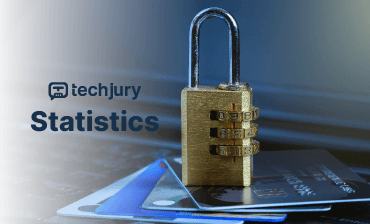The Silent Digital Pandemic: Unraveling Cybersecurity‘s Most Critical Challenge
Imagine sitting in your favorite coffee shop, casually scrolling through your smartphone, completely unaware that in those few moments, somewhere in the world, a hacker is systematically dismantling digital barriers and accessing millions of personal records. This isn‘t science fiction—this is our current reality.
Data breaches have transformed from isolated technological incidents into a global phenomenon that threatens individual privacy, corporate stability, and national security. As a data analysis specialist who has spent years studying these digital intrusions, I‘m here to pull back the curtain on one of the most complex and evolving challenges of our digital age.
The Invisible War: Understanding Modern Cyber Threats
When we talk about data breaches, we‘re not discussing abstract technological problems. We‘re exploring a sophisticated ecosystem of human behavior, technological vulnerability, and strategic manipulation. Each breach represents a complex narrative—a digital crime scene where technological sophistication meets human psychology.
Consider the numbers: In 2022 alone, over 4,145 confirmed data breaches exposed an astounding 22 billion records. These aren‘t just statistics; they represent real people, real lives disrupted by invisible digital predators.
The Anatomy of a Data Breach: More Than Just Stolen Information
Psychological Warfare in the Digital Realm
Data breaches aren‘t merely technological failures—they‘re intricate psychological operations. Hackers don‘t just exploit software vulnerabilities; they understand and manipulate human behavior. Social engineering techniques have become so sophisticated that they transform ordinary individuals into unwitting participants in their own digital compromise.
Take, for instance, the 2017 Equifax breach. This wasn‘t just a technological mishap but a masterclass in systemic vulnerability. By exploiting an unpatched Apache Struts vulnerability, attackers accessed personal information for 145.5 million Americans. The breach wasn‘t just about stolen data; it represented a fundamental breakdown of trust between institutions and individuals.
The Economic Ripple Effect
Each data breach creates massive economic tremors. The average cost of a data breach in 2022 reached [%$4.35 million%], a figure that doesn‘t just represent financial loss but encompasses reputation damage, legal complications, and long-term trust erosion.
Case Studies: Digital Crime Scenes Decoded
Yahoo: The Breach That Redefined Corporate Vulnerability
The Yahoo data breach stands as a landmark moment in cybersecurity history. Discovered in 2016 but originating between 2013-2014, this breach compromised 3 billion user accounts—essentially every Yahoo user at the time. What makes this case extraordinary isn‘t just the scale but the prolonged undetected access.
State-sponsored hackers, believed to be connected to Russian intelligence services, systematically infiltrated Yahoo‘s systems. They didn‘t just steal data; they created a blueprint for future sophisticated cyber intrusions. The breach ultimately contributed to a [%$350 million%] reduction in Verizon‘s acquisition price, demonstrating how digital vulnerabilities translate directly into financial consequences.
Marriott International: Hospitality‘s Nightmare
In 2018, Marriott International discovered a breach affecting 500 million guests—a number larger than most countries‘ populations. Attackers accessed reservation details, passport information, and contact data. What‘s particularly chilling is the duration: the intrusion remained undetected for four years.
This wasn‘t just a technological failure but a systemic breakdown in monitoring and security protocols. The breach highlighted a critical insight: in our interconnected digital ecosystem, vulnerabilities can remain hidden for years, silently accumulating potential damage.
Emerging Defense Strategies: Beyond Traditional Cybersecurity
The Rise of Artificial Intelligence in Threat Detection
Traditional cybersecurity models are becoming obsolete. Machine learning and artificial intelligence are revolutionizing threat detection, creating adaptive systems that can predict and neutralize potential breaches before they occur.
Advanced AI models now analyze millions of data points simultaneously, identifying subtle behavioral anomalies that human analysts might miss. These systems don‘t just react; they anticipate, creating a proactive defense mechanism against increasingly sophisticated cyber threats.
The Human Element: Your Personal Cybersecurity Toolkit
Practical Steps for Digital Self-Defense
While technological solutions are crucial, individual awareness remains the most potent defense. Here are strategies to fortify your digital presence:
Password Complexity: Develop unique, complex passwords for each digital account. Consider password managers that generate and store intricate passwords.
Two-Factor Authentication: Enable this feature wherever possible. It adds an additional verification layer that significantly complicates unauthorized access.
Regular Monitoring: Consistently check financial statements, credit reports, and digital account activities for unexpected changes.
Continuous Learning: Stay informed about emerging cyber threats. The digital landscape evolves rapidly, and knowledge is your primary defense.
Looking Forward: The Future of Cybersecurity
Quantum Encryption and Beyond
The next frontier of cybersecurity lies in quantum encryption—a technology promising theoretically unbreakable communication channels. By leveraging quantum mechanical principles, we‘re moving towards communication methods that fundamentally resist traditional hacking techniques.
Imagine communication channels where interception automatically alters the message, making unauthorized access immediately detectable. This isn‘t future speculation; quantum encryption research is already producing promising prototypes.
Conclusion: Embracing Digital Resilience
Data breaches aren‘t just technological incidents—they‘re complex narratives of human vulnerability, technological evolution, and strategic adaptation. As our world becomes increasingly digital, understanding these dynamics isn‘t optional; it‘s essential.
Your digital safety isn‘t about perfect protection but continuous adaptation. By staying informed, maintaining vigilance, and understanding the broader ecosystem, you transform from a potential victim to an empowered digital citizen.
The digital battlefield is complex and ever-changing. Are you ready to navigate its challenges?
About the Research
This comprehensive analysis draws from global cybersecurity research, forensic data breach investigations, and ongoing technological trend assessments. As a dedicated data analysis specialist, my commitment is to provide clear, actionable insights in an increasingly complex digital landscape.
